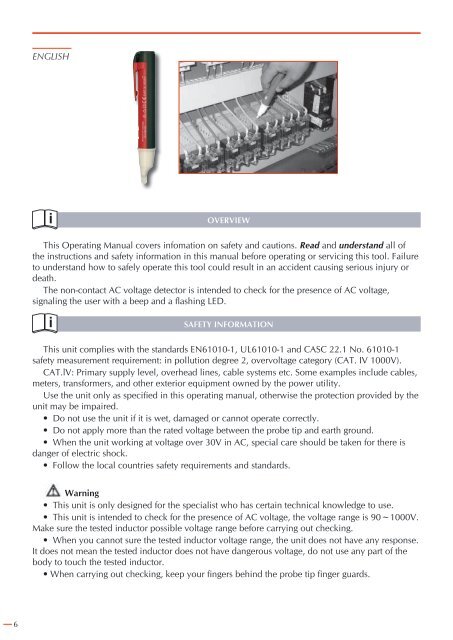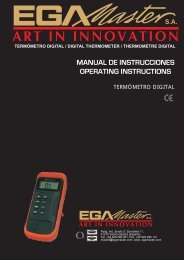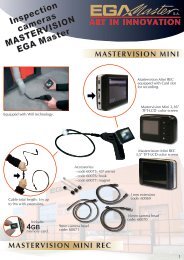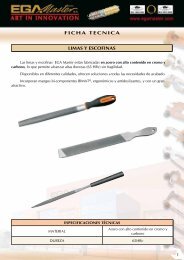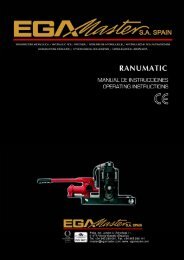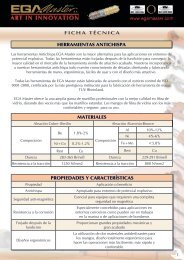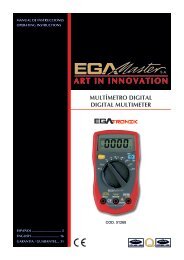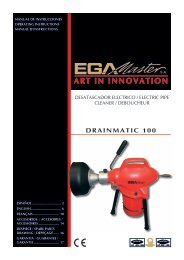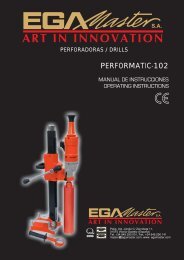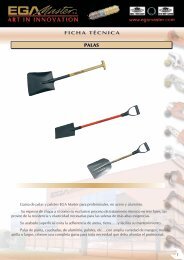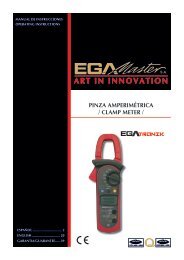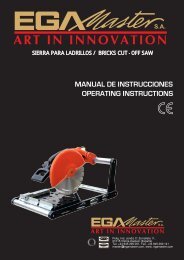NON-CONTACT AC VOLTAGE DETECTOR - Ega Master
NON-CONTACT AC VOLTAGE DETECTOR - Ega Master
NON-CONTACT AC VOLTAGE DETECTOR - Ega Master
You also want an ePaper? Increase the reach of your titles
YUMPU automatically turns print PDFs into web optimized ePapers that Google loves.
ENGLISHOVERVIEWThis Operating Manual covers infomation on safety and cautions. Read and understand all ofthe instructions and safety information in this manual before operating or servicing this tool. Failureto understand how to safely operate this tool could result in an accident causing serious injury ordeath.The non-contact <strong>AC</strong> voltage detector is intended to check for the presence of <strong>AC</strong> voltage,signaling the user with a beep and a flashing LED.SAFETY INFORMATIONThis unit complies with the standards EN61010-1, UL61010-1 and CASC 22.1 No. 61010-1safety measurement requirement: in pollution degree 2, overvoltage category (CAT. IV 1000V).CAT.lV: Primary supply level, overhead lines, cable systems etc. Some examples include cables,meters, transformers, and other exterior equipment owned by the power utility.Use the unit only as specified in this operating manual, otherwise the protection provided by theunit may be impaired.• Do not use the unit if it is wet, damaged or cannot operate correctly.• Do not apply more than the rated voltage between the probe tip and earth ground.• When the unit working at voltage over 30V in <strong>AC</strong>, special care should be taken for there isdanger of electric shock.• Follow the local countries safety requirements and standards.Warning• This unit is only designed for the specialist who has certain technical knowledge to use.• This unit is intended to check for the presence of <strong>AC</strong> voltage, the voltage range is 90~1000V.Make sure the tested inductor possible voltage range before carrying out checking.• When you cannot sure the tested inductor voltage range, the unit does not have any response.It does not mean the tested inductor does not have dangerous voltage, do not use any part of thebody to touch the tested inductor.• When carrying out checking, keep your fingers behind the probe tip finger guards.6


